Abstract
1. Prostaglandin E2 (PGE2) relaxes circular smooth muscle of the rabbit isolated jugular vein at very low concentrations (mean pIC50 against histamine-induced contraction = 9.34). This effect is not blocked by the EP1-receptor antagonist, AH 6809 (2 microM). 2. From a group of prostaglandin E analogues examined, 16,16-dimethyl PGE2, misoprostol, 11-deoxy PGE2-1-alcohol and 11-deoxy PGE1 were highly potent relaxant agents, whereas 17-phenyl-omega-trinor PGE2, MB 28767 and butaprost had low potency and sulprostone and oxoprostol were virtually inactive. 3. Comparison of the jugular vein data with published data for inhibitory agonist potencies on the cat trachea (EP2 preparation) and the field-stimulated guinea-pig vas deferens (EP3) indicates that the EP-receptor in the rabbit jugular vein is closest to the EP2 subtype. However, the correlation is not entirely convincing. For example, butaprost, 16,16-dimethyl PGE2 and 11-deoxy PGE1 are of similar potency on the cat trachea, whereas butaprost is about 300 times less potent than the other two analogues on the jugular vein. The existence of more than one EP2-receptor appears possible. 4. It was felt that the activity of butaprost required further investigation in view of the claim that it is a specific EP2-receptor agonist. We have shown that butaprost has very low inhibitory activity on the guinea-pig vas deferens, a very sensitive EP3-receptor containing preparation. However, on the chick ileum, the original EP3 preparation, butaprost showed potent contractile activity (pEC25 approximately 8.0).(ABSTRACT TRUNCATED AT 250 WORDS)
Full text
PDF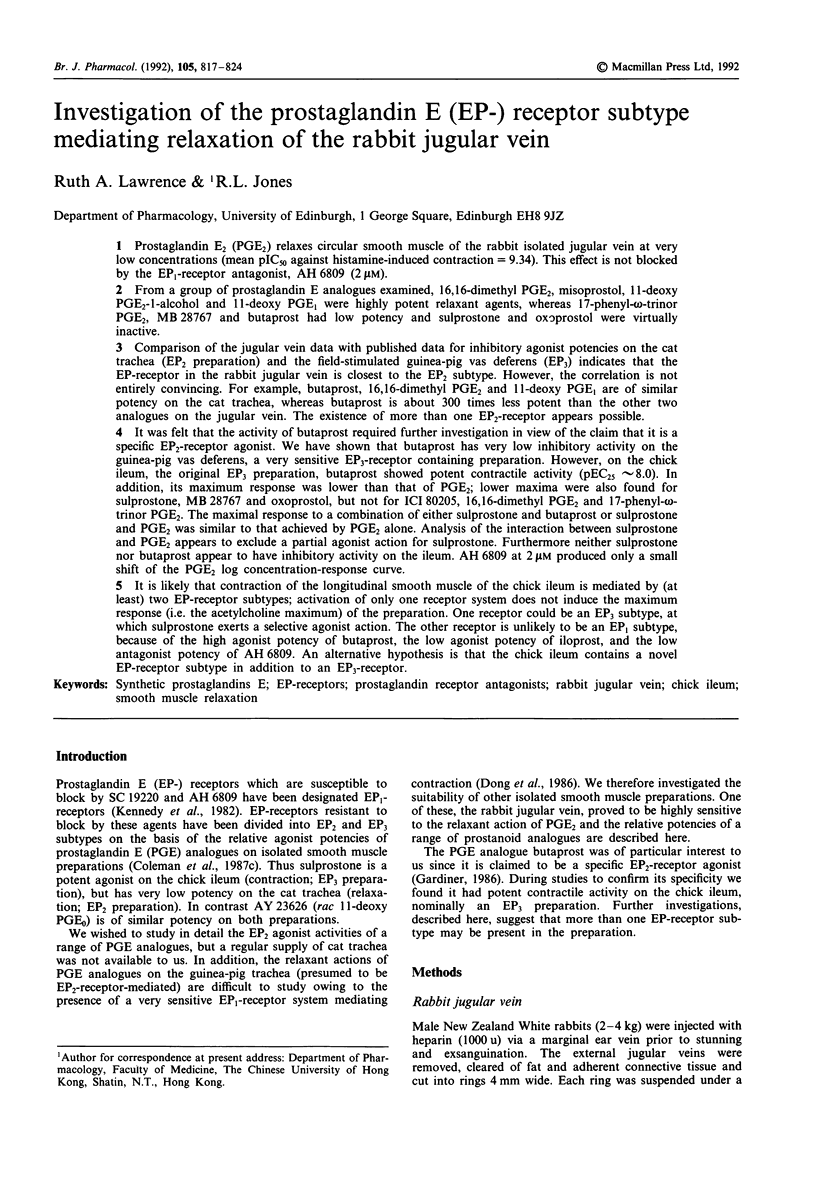
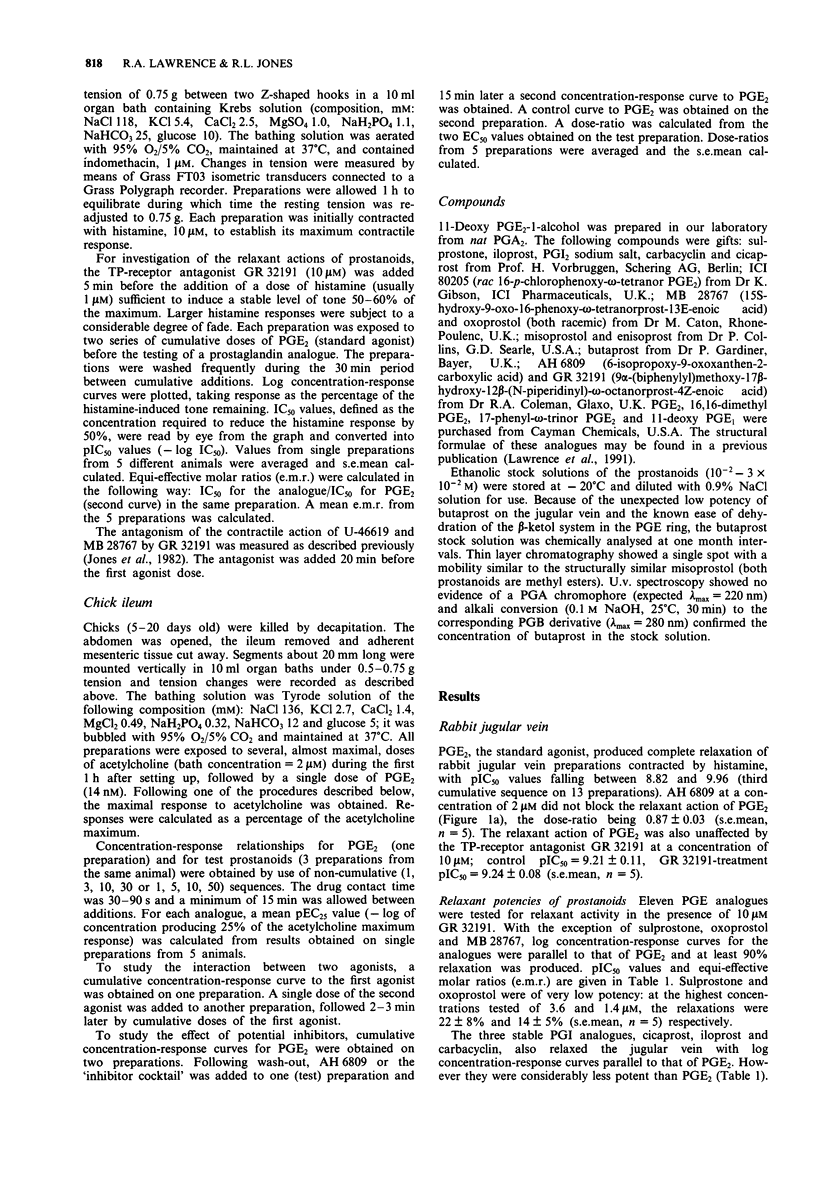
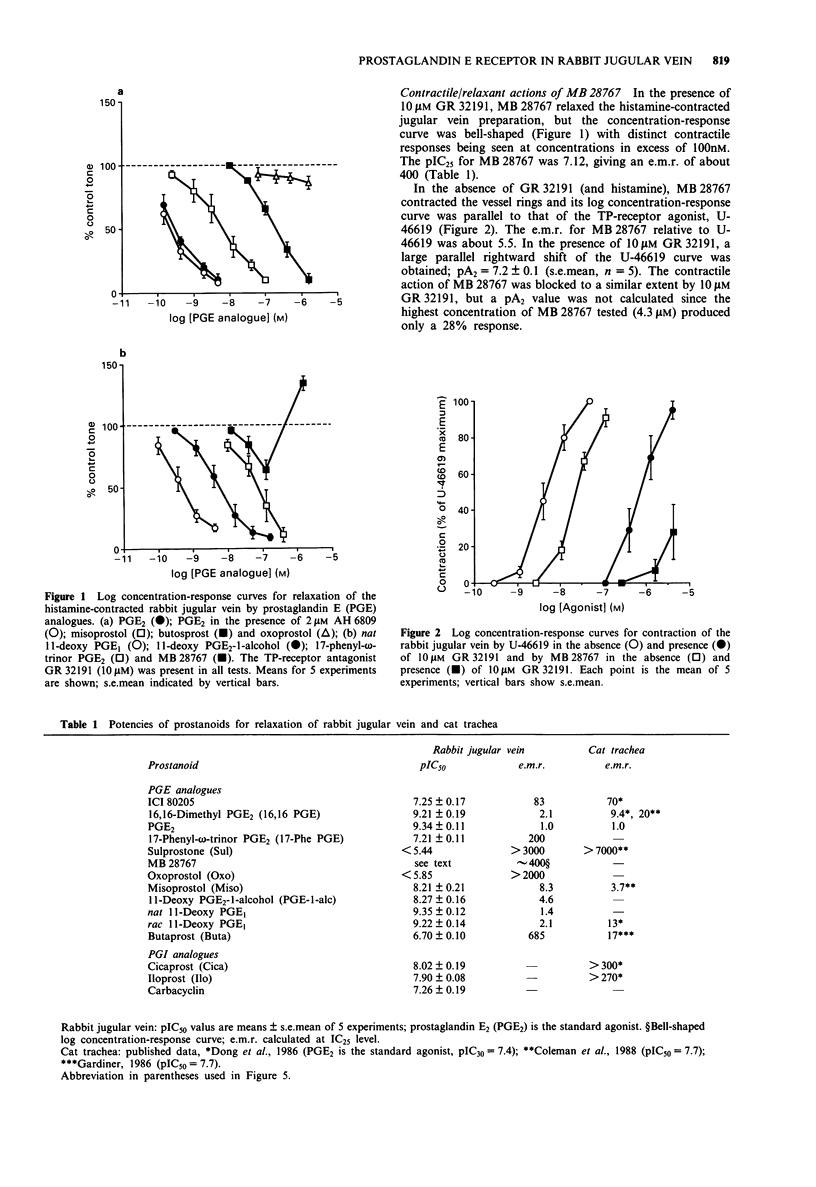
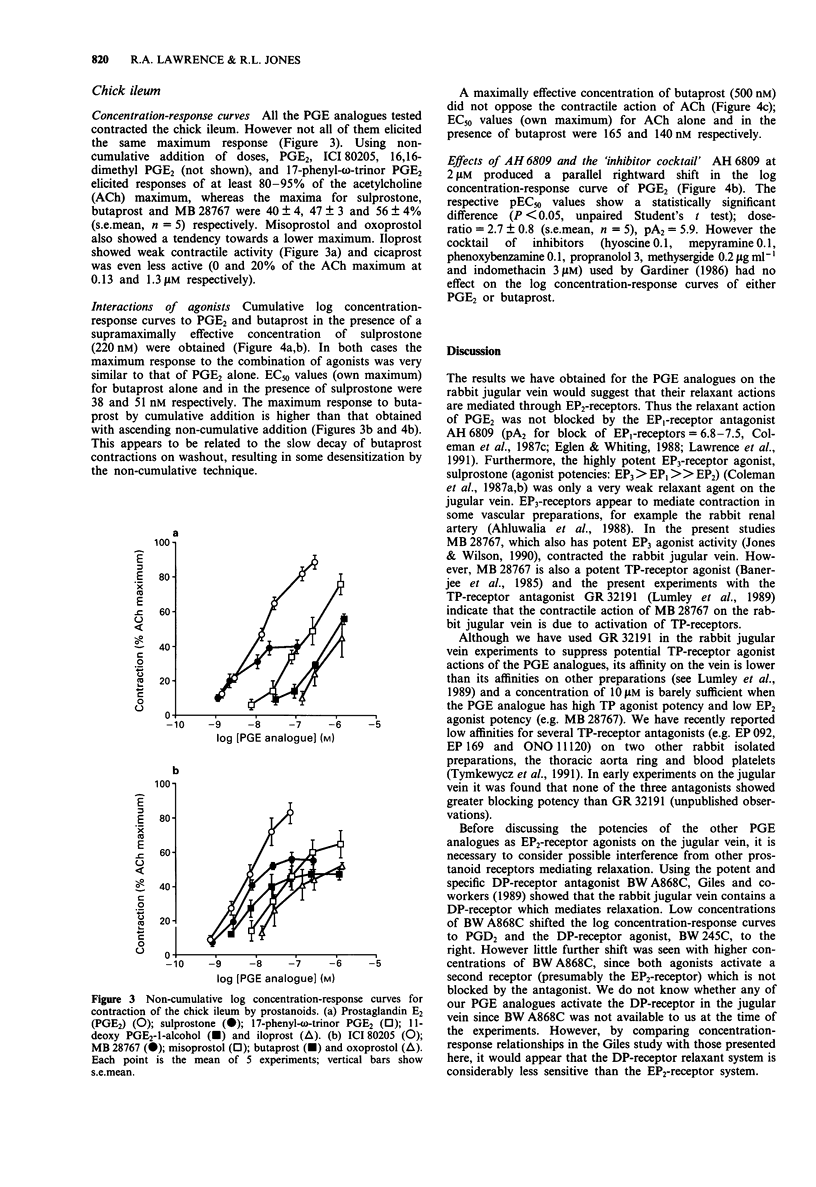
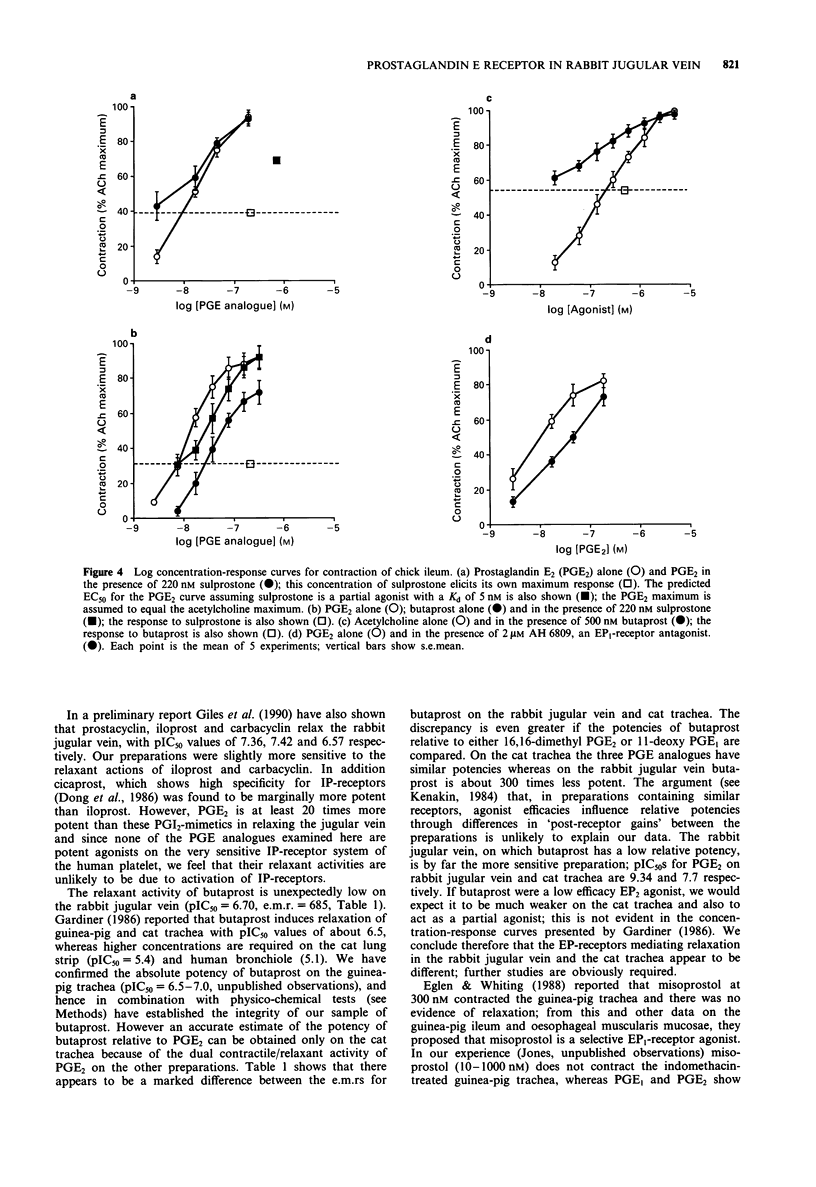
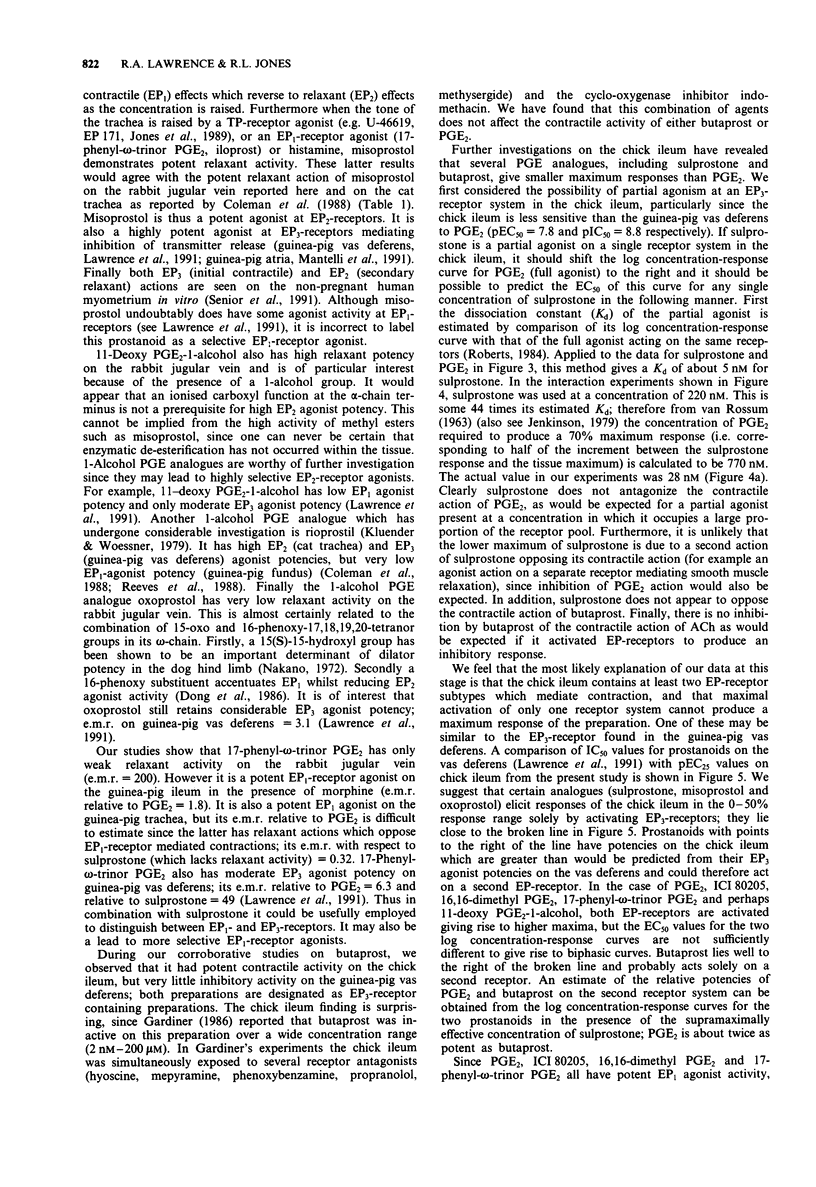
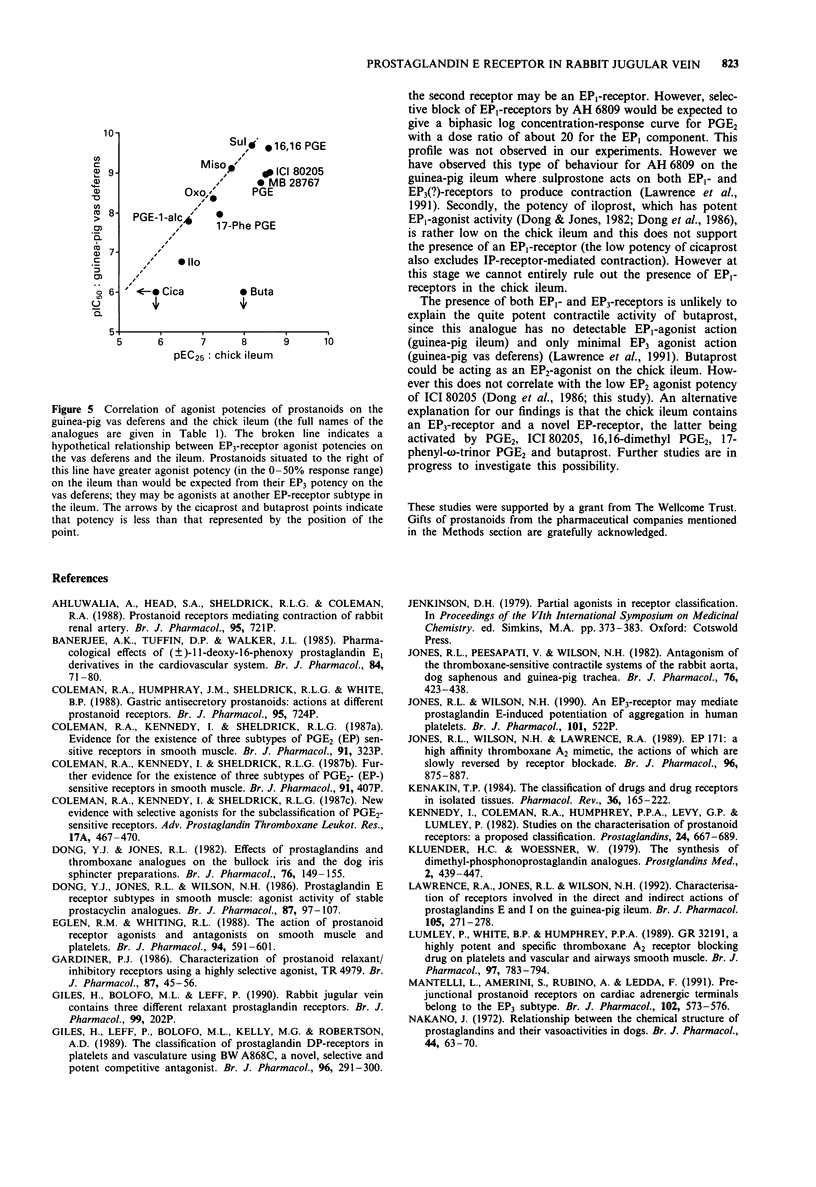
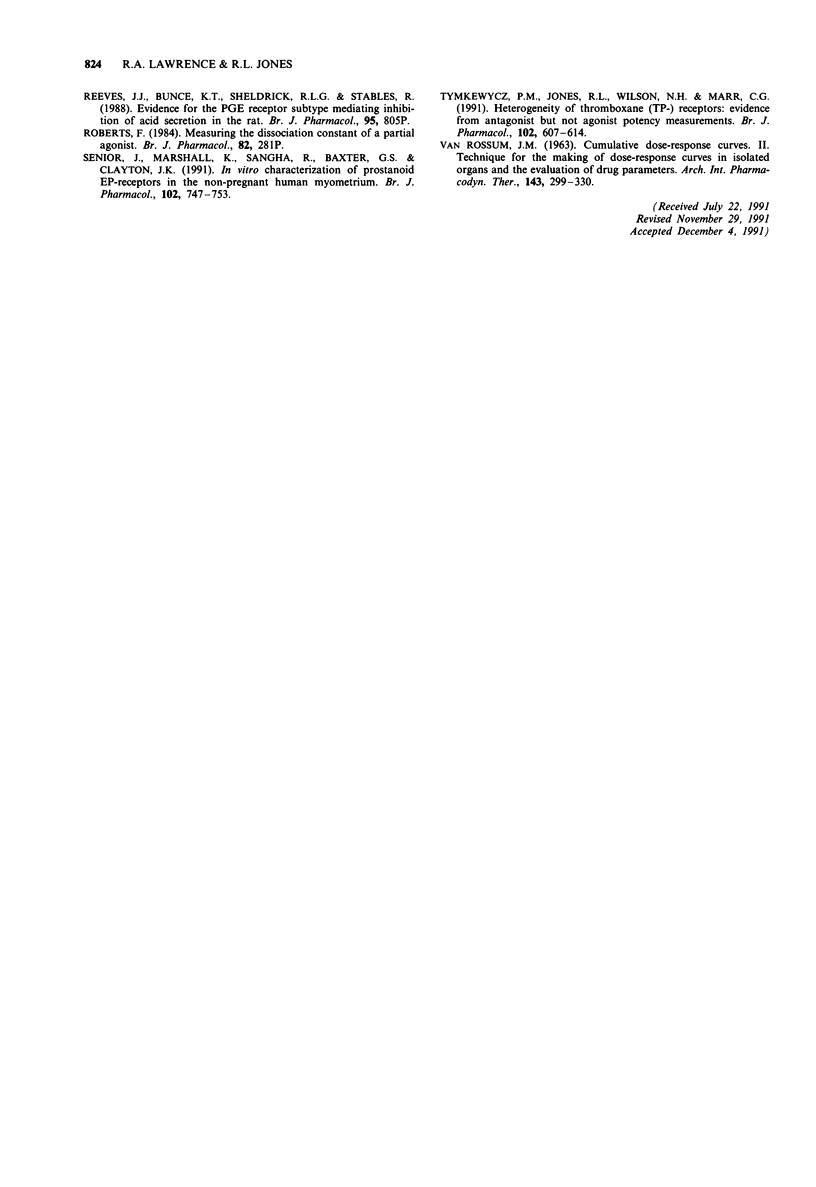
Selected References
These references are in PubMed. This may not be the complete list of references from this article.
- Banerjee A. K., Tuffin D. P., Walker J. L. Pharmacological effects of (+/-)-11-deoxy, 16-phenoxy-prostaglandin E1 derivatives in the cardiovascular system. Br J Pharmacol. 1985 Jan;84(1):71–80. [PMC free article] [PubMed] [Google Scholar]
- Buzzi M. G., Moskowitz M. A. The antimigraine drug, sumatriptan (GR43175), selectively blocks neurogenic plasma extravasation from blood vessels in dura mater. Br J Pharmacol. 1990 Jan;99(1):202–206. doi: 10.1111/j.1476-5381.1990.tb14679.x. [DOI] [PMC free article] [PubMed] [Google Scholar]
- Coleman R. A., Kennedy I., Sheldrick R. L. New evidence with selective agonists and antagonists for the subclassification of PGE2-sensitive (EP) receptors. Adv Prostaglandin Thromboxane Leukot Res. 1987;17A:467–470. [PubMed] [Google Scholar]
- Dong Y. J., Jones R. L. Effects of prostaglandins and thromboxane analogues on bullock and dog iris sphincter preparations. Br J Pharmacol. 1982 May;76(1):149–155. doi: 10.1111/j.1476-5381.1982.tb09200.x. [DOI] [PMC free article] [PubMed] [Google Scholar]
- Dong Y. J., Jones R. L., Wilson N. H. Prostaglandin E receptor subtypes in smooth muscle: agonist activities of stable prostacyclin analogues. Br J Pharmacol. 1986 Jan;87(1):97–107. doi: 10.1111/j.1476-5381.1986.tb10161.x. [DOI] [PMC free article] [PubMed] [Google Scholar]
- Eglen R. M., Whiting R. L. The action of prostanoid receptor agonists and antagonists on smooth muscle and platelets. Br J Pharmacol. 1988 Jun;94(2):591–601. doi: 10.1111/j.1476-5381.1988.tb11565.x. [DOI] [PMC free article] [PubMed] [Google Scholar]
- Gardiner P. J. Characterization of prostanoid relaxant/inhibitory receptors (psi) using a highly selective agonist, TR4979. Br J Pharmacol. 1986 Jan;87(1):45–56. doi: 10.1111/j.1476-5381.1986.tb10155.x. [DOI] [PMC free article] [PubMed] [Google Scholar]
- Giles H., Leff P., Bolofo M. L., Kelly M. G., Robertson A. D. The classification of prostaglandin DP-receptors in platelets and vasculature using BW A868C, a novel, selective and potent competitive antagonist. Br J Pharmacol. 1989 Feb;96(2):291–300. doi: 10.1111/j.1476-5381.1989.tb11816.x. [DOI] [PMC free article] [PubMed] [Google Scholar]
- Jones R. L., Peesapati V., Wilson N. H. Antagonism of the thromboxane-sensitive contractile systems of the rabbit aorta, dog saphenous vein and guinea-pig trachea. Br J Pharmacol. 1982 Jul;76(3):423–438. doi: 10.1111/j.1476-5381.1982.tb09236.x. [DOI] [PMC free article] [PubMed] [Google Scholar]
- Jones R. L., Wilson N. H., Lawrence R. A. EP 171: a high affinity thromboxane A2-mimetic, the actions of which are slowly reversed by receptor blockade. Br J Pharmacol. 1989 Apr;96(4):875–887. doi: 10.1111/j.1476-5381.1989.tb11898.x. [DOI] [PMC free article] [PubMed] [Google Scholar]
- Kenakin T. P. The classification of drugs and drug receptors in isolated tissues. Pharmacol Rev. 1984 Sep;36(3):165–222. [PubMed] [Google Scholar]
- Kennedy I., Coleman R. A., Humphrey P. P., Levy G. P., Lumley P. Studies on the characterisation of prostanoid receptors: a proposed classification. Prostaglandins. 1982 Nov;24(5):667–689. doi: 10.1016/0090-6980(82)90036-3. [DOI] [PubMed] [Google Scholar]
- Lawrence R. A., Jones R. L., Wilson N. H. Characterization of receptors involved in the direct and indirect actions of prostaglandins E and I on the guinea-pig ileum. Br J Pharmacol. 1992 Feb;105(2):271–278. doi: 10.1111/j.1476-5381.1992.tb14245.x. [DOI] [PMC free article] [PubMed] [Google Scholar]
- Lumley P., White B. P., Humphrey P. P. GR32191, a highly potent and specific thromboxane A2 receptor blocking drug on platelets and vascular and airways smooth muscle in vitro. Br J Pharmacol. 1989 Jul;97(3):783–794. doi: 10.1111/j.1476-5381.1989.tb12017.x. [DOI] [PMC free article] [PubMed] [Google Scholar]
- Mantelli L., Amerini S., Rubino A., Ledda F. Prejunctional prostanoid receptors on cardiac adrenergic terminals belong to the EP3 subtype. Br J Pharmacol. 1991 Mar;102(3):573–576. doi: 10.1111/j.1476-5381.1991.tb12214.x. [DOI] [PMC free article] [PubMed] [Google Scholar]
- Nakano J. Relationship between the chemical structure of prostaglandins and their vasoactivities in dogs. Br J Pharmacol. 1972 Jan;44(1):63–70. doi: 10.1111/j.1476-5381.1972.tb07238.x. [DOI] [PMC free article] [PubMed] [Google Scholar]
- Parratt J. R., Sharma N., Zeitlin I. J. Prostaglandins and thromboxane in the delayed phase of shock induced by Serratia marcescens endotoxin. Br J Pharmacol. 1984 May;82(1):281–288. doi: 10.1111/j.1476-5381.1984.tb16469.x. [DOI] [PMC free article] [PubMed] [Google Scholar]
- Senior J., Marshall K., Sangha R., Baxter G. S., Clayton J. K. In vitro characterization of prostanoid EP-receptors in the non-pregnant human myometrium. Br J Pharmacol. 1991 Mar;102(3):747–753. doi: 10.1111/j.1476-5381.1991.tb12244.x. [DOI] [PMC free article] [PubMed] [Google Scholar]
- Tymkewycz P. M., Jones R. L., Wilson N. H., Marr C. G. Heterogeneity of thromboxane A2 (TP-) receptors: evidence from antagonist but not agonist potency measurements. Br J Pharmacol. 1991 Mar;102(3):607–614. doi: 10.1111/j.1476-5381.1991.tb12220.x. [DOI] [PMC free article] [PubMed] [Google Scholar]
- VAN ROSSUM J. M. Cumulative dose-response curves. II. Technique for the making of dose-response curves in isolated organs and the evaluation of drug parameters. Arch Int Pharmacodyn Ther. 1963;143:299–330. [PubMed] [Google Scholar]
- Williams T. L., Smith D. A., Burton N. R., Stone T. W. Amino acid pharmacology in neocortical slices: evidence for bimolecular actions from an extension of the Hill and Gaddum-Schild equations. Br J Pharmacol. 1988 Nov;95(3):805–810. doi: 10.1111/j.1476-5381.1988.tb11708.x. [DOI] [PMC free article] [PubMed] [Google Scholar]


